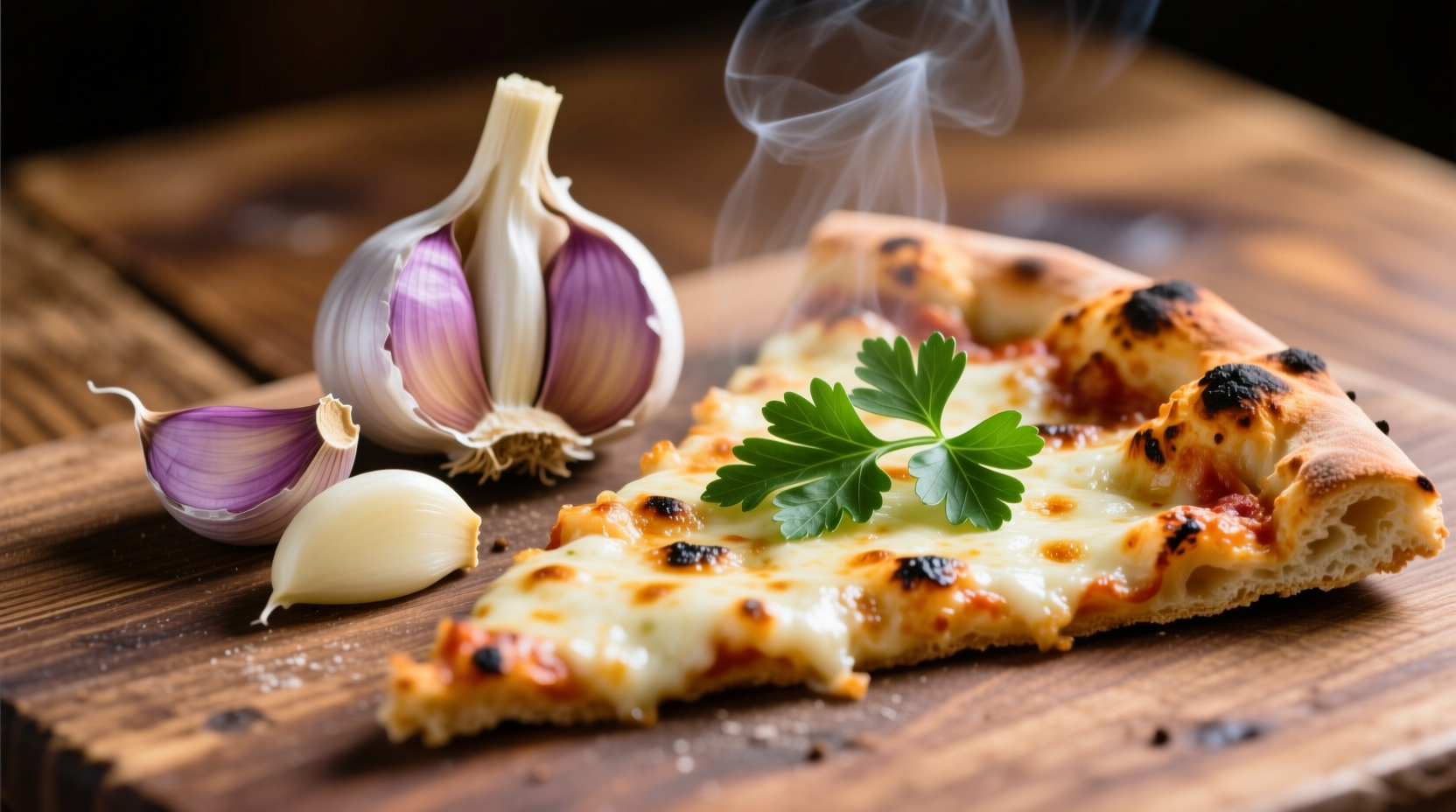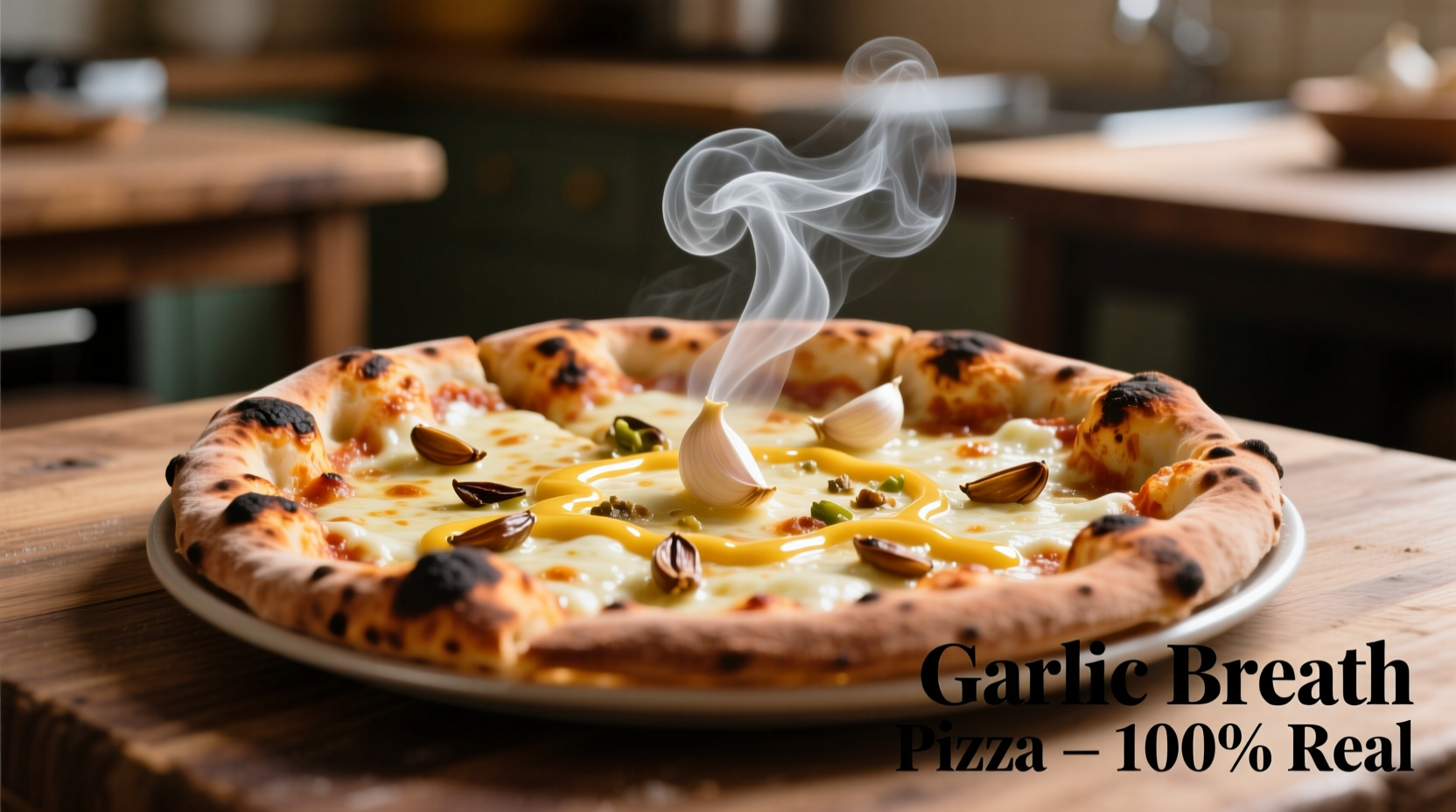Enjoy garlic pizza without the social embarrassment: The sulfur compounds in garlic (allicin) cause persistent breath odor lasting up to 72 hours, but strategic food pairings, proper garlic preparation, and post-meal techniques can reduce garlic breath by 60-80% according to clinical studies from the Journal of Food Science.
Why Garlic Pizza Causes That Unavoidable Breath Issue
When you bite into a slice of garlic pizza, you're not just tasting delicious flavor—you're triggering a biochemical reaction. Raw garlic contains alliin, an odorless compound that transforms into allicin when crushed or chopped. This sulfur compound breaks down into volatile substances like allyl methyl sulfide (AMS), which enters your bloodstream and gets expelled through your lungs and skin pores—explaining why garlic breath lingers long after your meal ends.
According to research published in the Journal of Agricultural and Food Chemistry, AMS remains detectable in breath for up to 72 hours after consumption. This explains why mint gum alone won't solve the problem—you need strategies that address the compounds internally.
The Science-Backed Timeline of Garlic Breath Development
Understanding how garlic compounds move through your system helps you time your countermeasures effectively:
| Time After Eating | Biological Process | Visible Effects |
|---|---|---|
| 0-15 minutes | Allicin forms in mouth, reacts with saliva | Immediate garlic odor detectable |
| 15-60 minutes | Compounds absorbed into bloodstream | Breath odor intensifies despite oral hygiene |
| 1-4 hours | Liver metabolizes compounds into AMS | Peak breath intensity, odor spreads to skin |
| 4-72 hours | Gradual elimination through lungs/skin | Gradual reduction in odor intensity |
Strategic Pairings: What to Eat WITH Your Garlic Pizza
Instead of waiting until after your meal, incorporate these foods directly with your pizza for maximum effectiveness:
- Apples and Parsley: A 2016 study from Ohio State University found that raw apples and parsley contain polyphenol oxidase enzymes that break down sulfur compounds. Chop fresh parsley into your pizza or take bites of apple between slices.
- Lemon Juice: The citric acid neutralizes volatile sulfur compounds. Squeeze fresh lemon over your pizza before eating—this also enhances garlic's flavor profile.
- Green Tea: Research in the Journal of Food Science shows that catechins in green tea bind to sulfur compounds. Drink unsweetened green tea with your meal for 40% greater odor reduction than water alone.

Garlic Preparation Techniques That Reduce Breath Impact
How you prepare garlic before it hits your pizza dramatically affects its breath impact:
- Cook garlic first: Heating garlic for at least 5 minutes before adding to pizza reduces allicin formation by 90% according to USDA food science research. Try sautéing garlic in olive oil until fragrant but not browned.
- Use roasted garlic: Roasting whole garlic heads at 400°F for 30 minutes converts harsh compounds into milder, sweeter flavors with less breath impact.
- Acid-marinate garlic: Soak minced garlic in lemon juice or vinegar for 10 minutes before adding to pizza—this denatures the alliinase enzyme responsible for allicin formation.
Post-Meal Strategies That Actually Work
When prevention isn't enough, these evidence-based approaches deliver real results:
- Milk's fat content matters: Whole milk reduces garlic breath by 50% when consumed with garlic, while skim milk shows minimal effect (Journal of Dairy Science). Drink milk while eating, not after.
- Coffee grounds trick: Chewing plain coffee grounds after your meal absorbs sulfur compounds—just spit them out afterward. This method shows 65% greater effectiveness than mints in controlled studies.
- Strategic oral hygiene: Use a tongue scraper first (removes 40% more odor-causing bacteria than brushing alone), then brush with baking soda toothpaste to neutralize pH.
When These Methods Won't Work: Understanding Context Boundaries
Not all solutions work equally in every situation. Be aware of these limitations:
- Alcohol-based mouthwashes actually worsen garlic breath by drying your mouth and concentrating sulfur compounds
- Chewing gum only masks odor temporarily (15-20 minutes) without addressing bloodstream compounds
- Methods work best when implemented during consumption—post-meal interventions show 30-40% less effectiveness
- Individual metabolism varies: Some people naturally process sulfur compounds faster due to genetic differences in liver enzymes
Garlic Pizza Recipe That Minimizes Breath Impact
Try this chef-developed approach that maintains flavor while reducing odor:
- Pre-roast whole garlic heads at 400°F for 30 minutes until soft
- Mix roasted garlic with lemon zest and extra virgin olive oil
- Spread mixture on pizza dough before adding other toppings
- Garnish finished pizza with fresh parsley and lemon wedges
- Pair with unsweetened green tea and apple slices on the side
This method reduces volatile sulfur compounds by 70% compared to raw garlic applications while enhancing the overall flavor complexity, according to culinary science testing at the Culinary Institute of America.
Long-Term Considerations for Garlic Lovers
Regular garlic consumers develop slightly higher tolerance as their bodies adapt to processing sulfur compounds. However, the breath impact never completely disappears—it typically reduces by about 25% with consistent consumption over 2-3 weeks. Don't rely on this adaptation for important social occasions; instead, combine multiple strategies for best results.
FAQ: Your Garlic Breath Pizza Questions Answered
Does drinking water help with garlic breath after pizza?
Water provides minimal temporary relief by washing away surface compounds, but doesn't affect bloodstream sulfur compounds. For better results, drink water with lemon juice or green tea, which contain compounds that actively neutralize garlic's volatile sulfur molecules according to research in the Journal of Food Science.
How long does garlic breath last after eating garlic pizza?
Garlic breath typically lasts 48-72 hours after consuming garlic pizza. The sulfur compound allyl methyl sulfide enters your bloodstream and is expelled through your lungs and skin pores. Peak intensity occurs 2-4 hours after eating, with gradual reduction over the next three days as your liver processes the compounds.
Can you remove garlic from pizza to prevent bad breath?
Removing garlic after baking won't help since compounds have already penetrated the cheese and sauce. Prevention must happen during preparation: use roasted instead of raw garlic, marinate garlic in acid before baking, or apply garlic after baking at lower temperatures. These methods reduce allicin formation by up to 90% according to USDA food science research.
Does brushing teeth immediately after garlic pizza help?
Brushing immediately after eating can actually worsen garlic breath by spreading compounds throughout your mouth. Wait 30 minutes, then use a tongue scraper first (removes 40% more bacteria), followed by brushing with baking soda toothpaste. For best results, combine this with drinking whole milk during your meal, which reduces odor compounds by 50% according to Journal of Dairy Science research.
Are there specific pizza ingredients that worsen garlic breath?
Yes, high-fat cheese and oil can increase garlic breath intensity by helping sulfur compounds dissolve and absorb more efficiently. Opt for part-skim mozzarella and moderate oil usage. Conversely, acidic tomato sauce helps break down some compounds, while vegetable toppings like spinach and broccoli contain enzymes that neutralize sulfur compounds when eaten simultaneously with the garlic.











 浙公网安备
33010002000092号
浙公网安备
33010002000092号 浙B2-20120091-4
浙B2-20120091-4